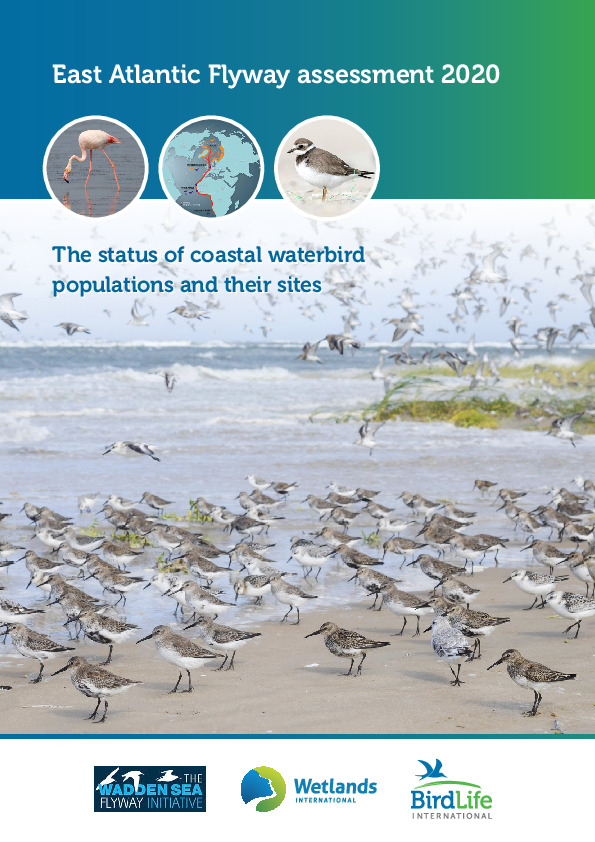RapportEast Atlantic Flyway Assessment 2020.The status of coastal waterbird populations and their sites.

See the full report in PDF (Warning: 148 MB!)
The East Atlantic Flyway stretches from Northeast Canada to North Siberia in Russia, southward along the coastlines of the Baltic Sea, North Sea and Eastern Atlantic Ocean all the way to South Africa. Many waterbird populations use this flyway during their breeding and non-breeding seasons. The monitoring along this flyway received a new impulse when the Wadden Sea was granted World Heritage Status. The Wadden Sea Flyway Initiative started an integrated monitoring programme together with Wetlands International and BirdLife International. Within this programme censuses of selections of sites have been conducted annually in Western Africa from 2013 onwards and total January counts along the entire flyway have taken place with an interval of three years, in 2014, 2017 and 2020. Increasingly also monitoring data from breeding bird programmes are used. In addition to the assessment of bird abundance, an assessment of environmental circumstances occurring in sites along the flyway was included. Thanks to this programme we can document flyway trends for more than 80 waterbird populations of 66 species, based on bird counts at thousands of sites.
Environmental data, including the presence of pressures and also the extent of conservation measures taken, have been collated from 115 important coastal sites in both Africa and Europe. Besides results from the ongoing general monitoring, this report brings together specific accounts about regions and sites (Russian Arctic, Wadden Sea, North Africa, Banc d’ Arguin, Bijagos archipelago, urban wetlands in Dakar and Lagos and coastal wetlands in Angola) and thematic chapters on the importance of monitoring vital rates of waterbirds and the differences in flyway trends based on non-breeding January data or breeding bird data.
Generally, the status of flyway populations using the coastal EAF appears relatively favourable, but with notable exceptions. In the long term, almost twice as many populations show an increasing or stable trend than a declining one. However in particular, arctic-breeding waders migrating over long distances show on average more negative trends than other taxonomic and functional groups. At the sites within the EAF used by waterbirds many anthropogenic pressures occur. The extent to which these pressures directly influence the conservation status of individual populations along the flyway, cannot be assessed from the current data, but fishing, agriculture,.disturbance from humans, waste pollution and urbanisation have all large influences. Also, the flyway is already under significant impact from climatic change, and this is bound to intensify in the coming decades. With the current monitoring effort in the EAF we are able to regularly update flyway trends and distribution of waterbird populations, and contribute to the development of population estimates, as well as signal pressures and conservation measures at the sites they use on a regular basis. To maintain a strong level of cooperation and information it will be important to continue and expand the current level of activities and coordination. Despite increasing quality of the data, we are still far from a situation where these data are collected routinely and in ongoing good quality along the flyway. Continued and increased cooperation, innovation and capacity building remains very important. Besides this, it is recommended to Improve the collection and utility of breeding bird data for flyway monitoring, to extend and update research into migratory connectivity and flyway boundaries, To invest in remote sensing of natural conditions and pressures, to reinforce and expand the monitoring of conditions in the Arctic and to Invest in research into causation of observed trends and relevant management responses.
See the full report in PDF (Warning: 148 MB!)
- Uitgever
- Germany, Wetlands International, Wageningen, The Netherlands, BirdLife International, Cambridge, United Kingdom.